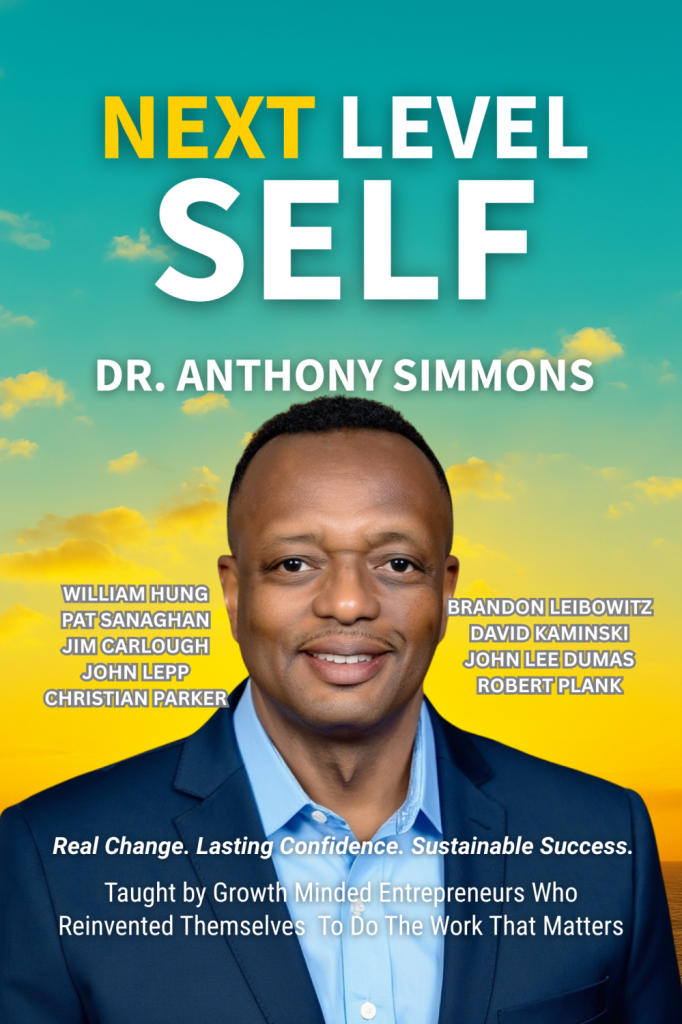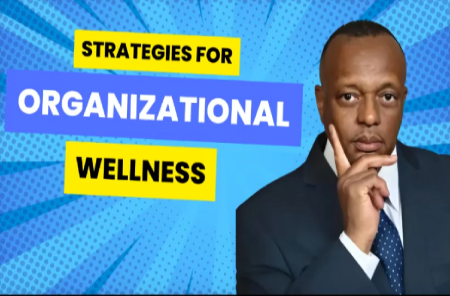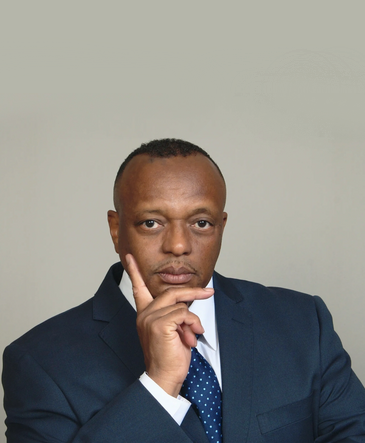You can’t command trust — you have to earn it. Still leading like it’s 1980? No wonder your team’s disengaged. What if leadership meant meeting people halfway — not above them?
You’re here because you want to reinvent yourself as a leader. You’ve seen the signs: team members quietly checking out, progress stalling, culture turning toxic. You’ve tried software, strategy decks, even motivation hacks — but the real problem isn’t the tools. It’s the connection. Or rather, the lack of it.
Dr. Anthony Simmons, PMP, CAPT, USN (ret) has led destroyers, trained international naval teams, and now teaches business leaders the truth most never realize:
“Success is not about control. It’s about trust.”
If that stings a little, good — it should.
So here’s the question: Are you leading your team from who you really are… or who you think you’re supposed to be?
Most leaders skip the one step that changes everything — looking in the mirror. Simmons says the first chapter of reinvention is self-assessment:
“You can’t lead others if you haven’t first examined yourself.”
That means identifying your blind spots, testing your coachability, and shifting from top-down authority to trust-based influence.
This isn’t another feel-good management trend. It’s the new leadership standard. And if you’re not ready to adapt, you’re not just behind — you’re in the way.
Self-Awareness Is the Leadership Skill No One Teaches
You’ve probably been told that leadership is about vision, execution, or charisma. But Dr. Anthony Simmons flips that idea completely: it starts with emotional intelligence — the kind no one teaches in MBA programs or boardrooms.
Here’s the truth most leaders avoid: You can’t build a purposeful business if you’re leading from blind spots.
Most people try to skip the uncomfortable work of self-examination. They look outward — changing strategy, switching platforms, hiring consultants — when the root of the issue is internal. Simmons calls this out directly:
“You can’t lead others if you haven’t first examined yourself.”
If your team is disengaged or underperforming, it’s time to stop asking “What’s wrong with them?” and start asking:
- Who am I as a leader?
- What personality traits drive my decisions — and which ones derail them?
- Where am I reacting emotionally instead of responding intentionally?
- Am I truly coachable?
Simmons recommends starting with a brutal self-assessment and building your leadership from the inside out. This includes examining your values, motivations, and emotional triggers — even if it’s uncomfortable.
According to Simmons, the four pillars of emotional intelligence every leader must master are:
- Self-awareness – Know what you feel and why you feel it.
- Self-management – Stay balanced and in control under pressure.
- Social awareness – Read the emotional cues and needs of others.
- Social interaction – Build trust through real, mutual respect.
If you skip this step, you’re leading blind. And your team feels it. The result? Passive-aggressive conflict, quiet quitting, and a culture where no one speaks up — or shows up fully.
Want to turn that around? Start with you.
Because your next level of leadership isn’t about adding more. It’s about aligning more.
These are the kind of deeply personal reinventions you’ll discover in Next Level Self — a book co-authored by Simmons and other growth-minded entrepreneurs. Each chapter is a field guide for breaking toxic patterns and leading with clarity and confidence.
Meet People Halfway — The Trust-Based Leadership Shift
Most leaders think their job is to set the vision and let everyone else catch up. But Dr. Anthony Simmons says real leadership requires something radically different: adjusting yourself to the people you lead.
“We have to meet people halfway… from their perspective.”
That idea might feel counterintuitive — especially if you were taught to lead from authority, not empathy. But Simmons learned firsthand that trust isn’t granted by a title. It’s earned by connection.
While commanding a Navy destroyer based in Japan, Simmons stood before his diverse crew and said:
“I am your captain. I happen to be African American. But above all, I am your captain. We serve one mission, one Navy, one nation.”
He didn’t ignore differences. He acknowledged them — and then called everyone to rise above them together. That’s the power of what he calls coaching triangulation: understanding people’s social, cultural, and emotional positioning so you can meet them where they are.
Instead of commanding harder, Simmons built trust by:
- Listening intuitively — hearing not just what’s said, but why it’s said
- Asking open-ended questions — to uncover perspectives, not control behavior
- Letting people design their own course of action — with support, not judgment
- Replacing micromanagement with coaching conversations
He also emphasized one of the most underused tools in leadership: frequent progress conversations. Not annual reviews. Not one-time interventions. But regular, intentional check-ins rooted in trust.
So if you’re frustrated by a disengaged team, ask yourself: Have you built a bridge to where they stand — or a wall?
Because until you meet people halfway, they won’t follow you anywhere.
What If I Lose Control by Adapting to Everyone?
It’s a fair question — and one Dr. Simmons hears often: “If I’m constantly adjusting to others, won’t I lose control of my team?”
His answer?
“Control is about compliance. Influence is about commitment.”
You don’t lose control by adapting. You gain influence.
Many leaders cling to control because it feels safer. But that control often breeds resentment, micromanagement, and ultimately… disengagement. Simmons saw this dynamic play out repeatedly — both in the military and in business settings.
He doesn’t advocate for chaos. What he teaches is intentional flexibility rooted in values. You don’t bend who you are — but you do tune in to who others are.
To do that well, you need:
- Emotional balance – the ability to stay centered when things get tense
- Cultural sensitivity – being aware of how different people see and process leadership
- Clarity of vision – so your flexibility doesn’t become confusion
Simmons explains this using a simple but powerful example: In the Navy, crews come from all over — different hometowns, different ships, different mindsets. He didn’t expect them to fall in line just because he was the captain. Instead, he created a shared language of expectations:
“I always said: Work hard, make people around you better. That was the command philosophy.”
The takeaway? Leadership is not about overpowering others with your values. It’s about inspiring alignment by first understanding theirs.
Culture Isn’t an Accessory — It’s a Leadership System
One of the most overlooked parts of modern leadership is cultural agility. Most leaders treat culture as a one-off initiative — a workshop, a poster, a slogan. But Dr. Simmons sees culture as operational, not ornamental.
“Cultural appreciation is not optional. It is operational.”
During his Navy career, he didn’t just dock ships in foreign ports — he engaged. He and his teams attended local art shows, community events, and even sports competitions. Why? Because trust wasn’t automatic. It had to be earned through understanding.
Inside organizations, Simmons uses the Cultural ATK framework to develop this strategic mindset:
- Awareness – Recognize different worldviews, values, and norms
- Tolerance – Ingratiate yourself through openness, not assumptions
- Knowledge – Learn and apply what matters to others to build deeper trust
This isn’t about being politically correct. It’s about being effective. Whether you lead in corporate, tech, or the military, you’re managing a team of individuals shaped by unique social experiences.
And if you ignore that?
You create blind spots that turn into bottlenecks. You lose alignment. And without alignment, sustainable confidence in your leadership begins to erode.
“We’re dealing with volatile, uncertain, complex, and ambiguous environments. Cultural agility isn’t a bonus — it’s mission-critical.”
When you align personal values with work, you build more than morale — you create clarity, unity, and shared purpose.
Technology Won’t Save a Disconnected Culture
Many leaders today are leaning heavily on automation, analytics, and artificial intelligence to fix organizational issues. But Simmons issues a bold warning:
“Technology accelerates what already exists. If you have a broken culture, technology will only break it faster.”
That’s why he teaches leaders to integrate — not replace — human connection with digital systems. At Sixth Gear Consulting, his firm focuses on balancing:
- Technical Excellence – Staying agile, implementing the right platforms
- Human Connection – Building trust, coaching, and true collaboration
You don’t need to choose between innovation and empathy. You need to bridge them.
Simmons calls this fusion the difference between the science of success and the art of success. And both matter.
You’re not just managing workflows — you’re leading people who run those workflows.
So before you roll out another platform or dashboard, ask: Have you built the trust foundation that will actually make it work?
Because your next software update won’t fix a culture that doesn’t communicate. But you can.
Conclusion: Real Leadership Starts Where Control Ends
You can’t command trust — you have to earn it. And if you’re still leading like it’s 1980, no wonder your team’s disengaged.
We began with that uncomfortable truth, and now you know why: today’s challenges can’t be solved with outdated leadership models. Dr. Anthony Simmons doesn’t teach you how to lead harder — he shows you how to lead deeper. Through emotional intelligence, cultural agility, and frequent coaching conversations, he helps leaders stop chasing compliance and start cultivating commitment.
His approach is practical, powerful, and proven — from commanding Navy destroyers across 63 countries to reshaping how organizations inspire trust today. The goal isn’t more control. It’s more connection. And it starts by reinventing yourself as a leader.
“You can’t lead others if you haven’t first examined yourself.”
If this message resonated, it’s just one chapter of a bigger transformation. Read the book Next Level Self: Real Change. Lasting Confidence. Sustainable Success. to meet nine other growth-minded entrepreneurs who, like Dr. Simmons, reinvented themselves to lead from alignment — not exhaustion.
Their stories aren’t motivational fluff. They’re blueprints for reinvention. And they’re waiting for you to take the next step.

Read Next Level Self. Start with you. Lead from who you truly are.

